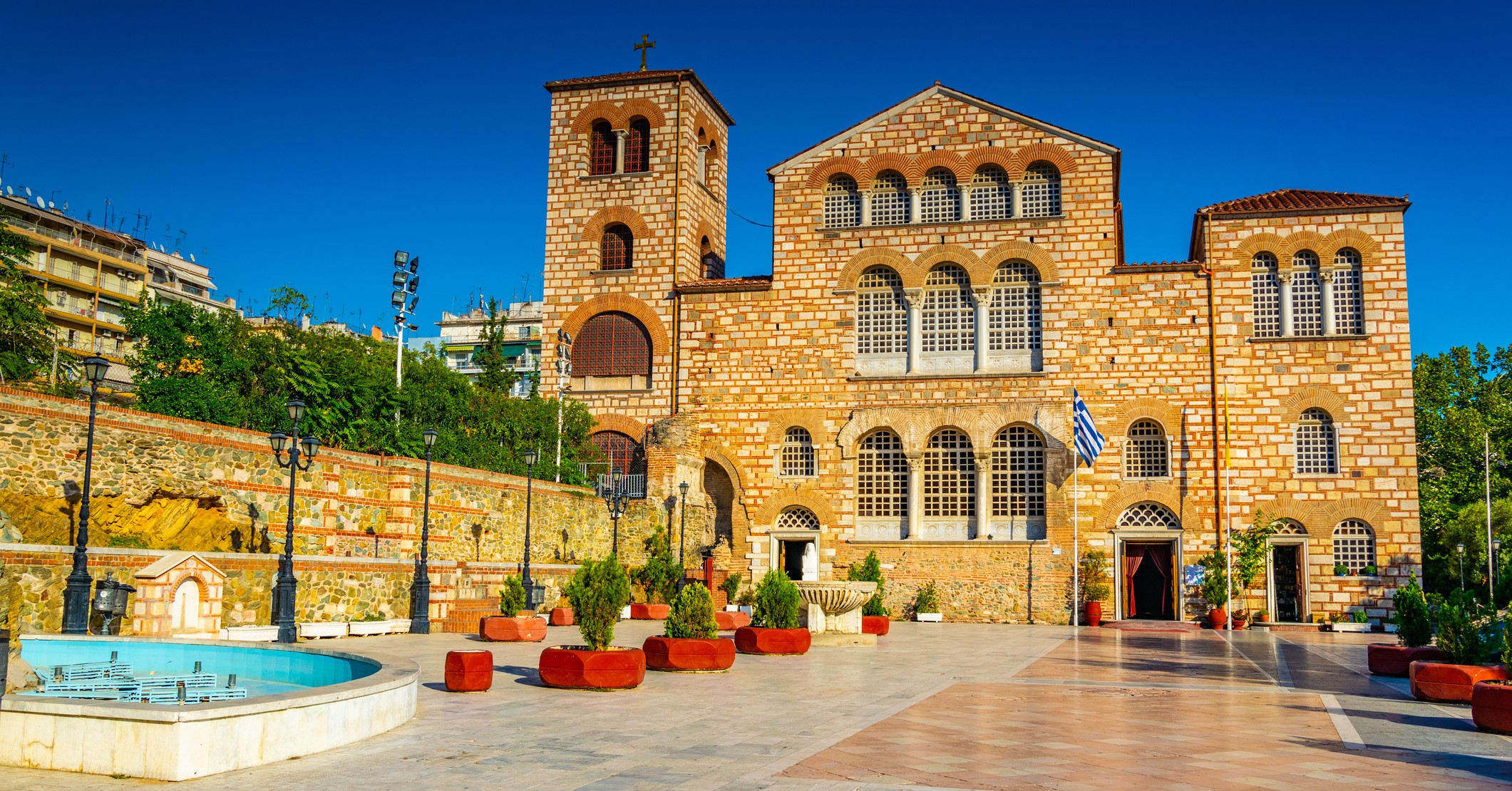Part 4: The history of the St. Demetrios Church
By John Thomsen
A visit to Thessaloniki’s St. Demetrius Church reveals its rich history,from Christian martyrdom to Roman roots.
The next stop in our trip to Thessaloniki was St Demetrios church. Of course, on the way, in respectable Greek fashion, we stopped for a relaxing coffee, pastry and a little people watching.
The actual Demetrios was a young proconsul of the Thessaloniki district. Tragically, in 306 A.D. he was killed because of his strong Christian beliefs. This was a time when Christians in Thessaloniki and elsewhere were being persecuted by the Roman emperor Galerius, a strong advocate of the old Greco-Roman gods. Interestingly, Galerius was struck with a terribly painful disease in 310 A.D. and had a sudden change of heart. Thinking that the Christian God might be seeking vengeance on him, he soon issued an edict tolerating Christianity. Surprisingly, the pagan religion lasted in some areas of Greece long after this period. Even as late as the 9th century A.D. in the Mani peninsula of Greece’s southern Peloponnese there remained vestiges of pagan worship.
Demetrios was sainted soon after his death, and the first Saint Demetrios Church was built in 324 A.D.. The church has gone through various major transformations over the centuries. For hundreds of years under Ottoman occupation it was even used as a mosque. As we were admiring this present magnificent basilica, I noticed from the corner of my eye at least 20 Chinese visitors emerging from some ancient recess underneath the church. Childhood stories telling me if you dig straight down through the Earth you’ll come to China flashed through my mind, but this didn’t satisfy my current knowledge base, so down the steps we went and back in time to where St. Demetrios and other Christians of the Roman period had been martyred. We had stumbled into Roman history. We discovered that this area at one time had been a Roman bathhouse and later the place where many Christians had been imprisoned, martyred and buried. It has now become a fascinating museum of the church’s history.
After ascending from this ancient crypt, I watched as people entered the church to spend time with icons of Christ and other saints. Being Lutheran, I don’t have the tradition of kissing icons, crossing myself, etc.… even though in Greece I have done these things several times and found that it feels quite natural. As I watched people coming into the church to visit, I was moved that young and old alike would stop and spend time with icons of Christ, Demetrios, Mary and other saints. I noticed one young fellow praying with a priest in front of an icon of St. Demetrios, another young fellow standing in silence, looking intently for quite some time at an icon of Jesus. There seemed to be a palpable connection between the two that I found very moving.
Tune in next week to see a surprising connection with my Danish heritage in Thessaloniki

